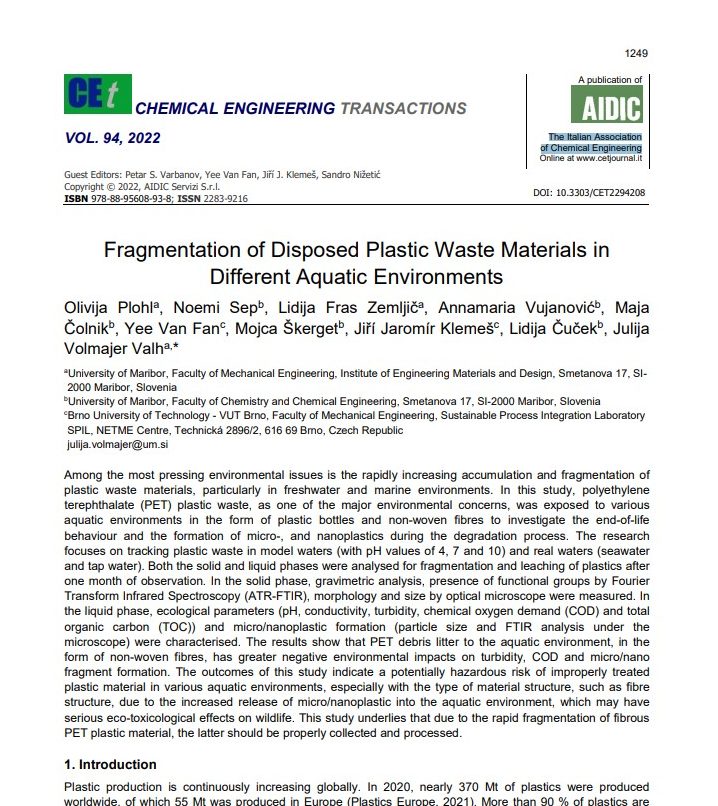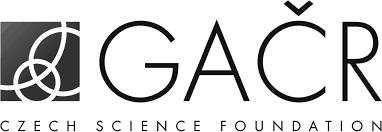Among the most pressing environmental issues is the rapidly increasing accumulation and fragmentation of plastic waste materials, particularly in freshwater and marine environments. In this study, polyethylene terephthalate (PET) plastic waste, as one of the major environmental concerns, was exposed to various aquatic environments in the form of plastic bottles and non-woven fibres to investigate the end-of-life behaviour and the formation of micro-, and nanoplastics during the degradation process. The research focuses on tracking plastic waste in model waters (with pH values of 4, 7 and 10) and real waters (seawater and tap water). Both the solid and liquid phases were analysed for fragmentation and leaching of plastics after one month of observation. In the solid phase, gravimetric analysis, presence of functional groups by Fourier Transform Infrared Spectroscopy (ATR-FTIR), morphology and size by optical microscope were measured. In the liquid phase, ecological parameters (pH, conductivity, turbidity, chemical oxygen demand (COD) and total organic carbon (TOC)) and micro/nanoplastic formation (particle size and FTIR analysis under the microscope) were characterised. The results show that PET debris litter to the aquatic environment, in the form of non-woven fibres, has greater negative environmental impacts on turbidity, COD and micro/nano fragment formation. The outcomes of this study indicate a potentially hazardous risk of improperly treated plastic material in various aquatic environments, especially with the type of material structure, such as fibre structure, due to the increased release of micro/nanoplastic into the aquatic environment, which may have serious eco-toxicological effects on wildlife. This study underlies that due to the rapid fragmentation of fibrous PET plastic material, the latter should be properly collected and processed.



